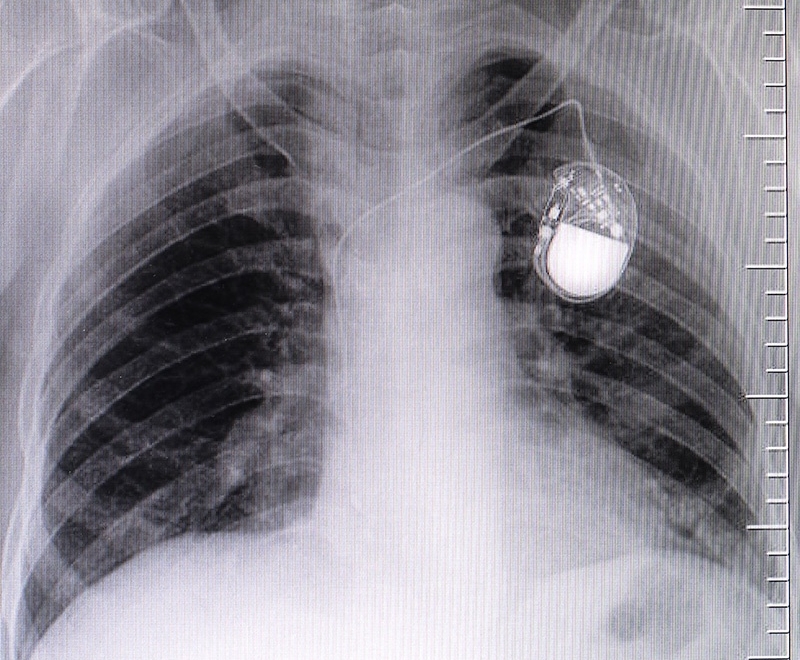Bio-Digital Convergence: The Human as Critical Infrastructure?

Are humans the next critical infrastructure sector?
Currently, humanity is being augmented or networked by somewhere around 14 billion connected devices and that number is increasing at an accelerating rate. The rate of growth implies a growing comfort with networked, wearable, and implanted devices – and our connectivity with them.
Over the past decade, our work has exposed us to some amazing human-integrated technology advances across a number of industries. We’ve seen need and a desire for longer, healthier lives driving many of the bio-digital developments that evolved quickly from bleeding-edge innovation to ubiquitous use. Implantable Internet of Things (IoT) devices like pacemakers, defibrillators, and insulin pumps are perfect examples – each external, electronic device has the potential to supplement or repair a deficiency that would otherwise shorten or even end someone’s life.
In a short amount of time, implantables and wearables have progressed far beyond these now commonplace technologies. At this point in our progress, we’ve moved to a new point in the Third Wave – Internet of Humans (IoH). We’re now thinking less about what forms IoT can take and more about how those tools have reshaped how we function, interact, and even exist.
Over the next decade, innovations will continue to streamline our lives, create greater insight into who we are as humans, and help us to know what is happening beneath our skin and inside our minds. And all will deepen our integration with technology, connecting us even more firmly within a bio-digital network.
- Artificial organs can be monitored and controlled remotely.
- Brain wave technologies that allow people to control their devices, simply by thinking about them.
- High tech e-skin (artificial skin) allows users to project and control their smartphone on their body.
- Smart tattoos and implantable RFID chips read and project body temperature and even emotions.
Already, we rely on enhanced biometric security to connect us to elements of IoT, smartphones, and computers. With this incredible progress and possibility for human connected technology to improve and extend lives comes the even greater potential for a threat like the ability for adversaries to manipulate these technologies.
To defeat the threat of tomorrow, we cannot afford to be reactive.
We tend to focus on the benefits of technological innovations – particularly those that solve fundamental human problems. But it’s absolutely vital to make sure we fully understand who will protect the human from being hacked, particularly as biometric innovations are being introduced into literally every facet of our lives.
Through conferences and client meetings, Toffler Associates has engaged in conversations with a variety of relevant experts from industry, academia, and government regarding both the potential and risk of implantable and wearable technologies. What we’ve heard is a general lack of consistency around how to weigh the potential benefits and risks of innovation.
In one conference, representatives from academia and the medical technology industry were discussing implantable medical technologies they were developing. These representatives explained that they don’t typically consider the possible vulnerabilities (i.e., hacking) that could accompany these emerging devices because their focus was on the life-saving roles these innovations promised.
In another, we discussed the ability of criminals and terrorists to attack parts of urban environments by remotely controlling or shocking people’s pacemakers and defibrillators. We also examined the threat of electromagnetic pulse (EMP) devices that can block all signals or destroy all electronics, including wearable and implantable devices, within set distances.
To combat tomorrow’s enemy, we need to develop a proactive approach that includes viewing the human as critical infrastructure.
Today, the Department of Homeland Security (DHS) defines 16 sectors as Critical Infrastructure, including Dams, Water and Wastewater Systems, Communications, and Energy. As humans and technology become more deeply intertwined, we should consider the inclusion of a 17th Critical Infrastructure sector focused on protecting citizens against hacking and other manipulation that could put lives at risk.
As our society relies on a cyber foundation for our daily lives, we subject ourselves to dangerous, potentially life-threatening risks. As we literally link our bodies to this cyber foundation, we must look farther than the promise that prompted the innovation to enhance our understanding of the potential negative implications.


 About the Authors
About the Authors